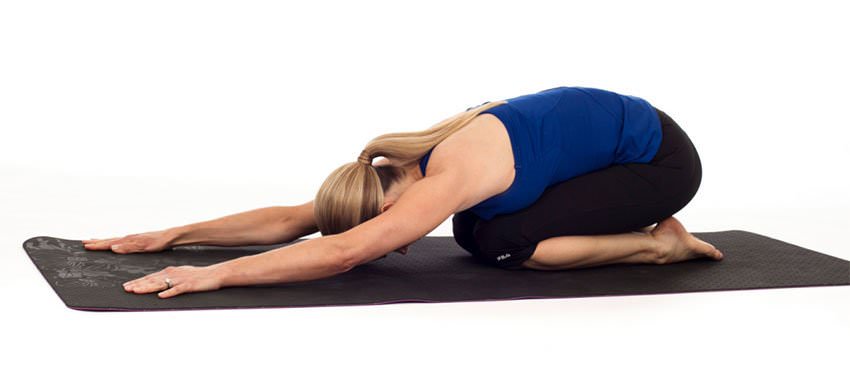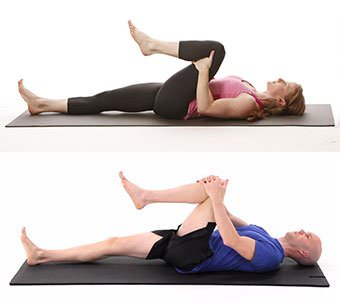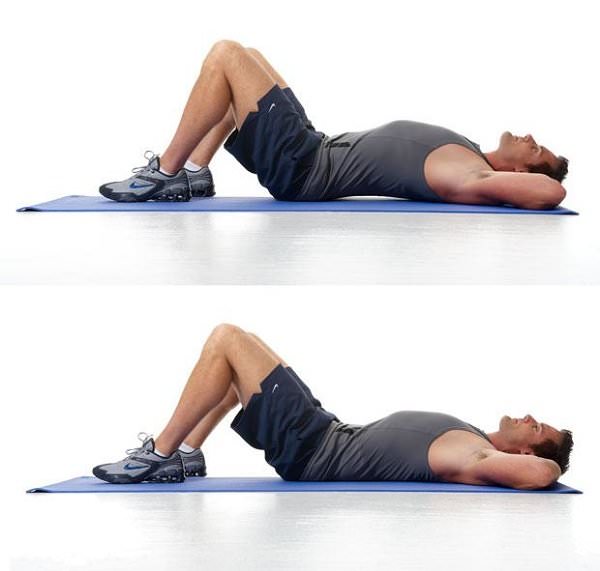Lower Back Pain? You’re Not Alone!
Globally, over 600 million people live with lower back pain; it is the leading cause of disability. Aging often brings degenerative changes to the spine, reducing the space between vertebrae and increasing discomfort. Embracing a flexion-based program can alleviate symptoms, making stretches a vital component in managing lower back pain. Learn these four most effective stretches to improve overall spinal health.
1. Hamstring and Lower Back Release (Single Knee to Chest)
Lie on your back with one knee bent and the other leg straight. Place your hands behind the straight leg and gently pull it toward your chest until you feel a light stretch along the back of the leg. Alternatively, you can place your hands over the bent leg and pull toward your chest. Hold for 30-60 seconds, switch legs, and repeat. Incorporate this stretch 3-5 times for each leg to target tight hamstrings, lower back, and glutes.
2. Piriformis Unwind
The piriformis, a small muscle running through the glutes, can become tight due to prolonged sitting, driving, or stair climbing. Lie flat with one knee bent, crossing the ankle of the opposite leg over the bent knee. Pull the knee across towards your chest, holding for 30-60 seconds. Switch legs and repeat. Practice this stretch 3-5 times for each leg to alleviate tension and potential sciatic nerve irritation. Watch a video on how to perform this stretch here.
3. Extended Child’s Pose (Prayer Stretch)

Start by tucking your legs underneath, sitting back on your heels. Bend forward at the waist, extending your arms over your head onto the floor in front. Focus on elongating the lower back muscles. Hold this position for 30-60 seconds and then return to an upright position. Repeat 3-5 times for optimal relief.
3. Core Stability – Pelvic Tilt
Lack of core control and stability is a key player in lower back pain. When the abdominal muscles are not performing, the muscles of the lumbar spine have to work harder to stabilize the body in balance. Enhance core stability to reduce lower back pain by lying flat with knees bent. Tighten your abdominal muscles, as if bracing for a stomach punch, and press the small of your back into the floor. Hold for 10 seconds, repeating 10-20 times. Remember to keep your feet flat on the floor, shoulders pressed to the floor but relaxed, and avoid holding your breath during the exercise.
Proactive Steps for Lower Back Pain
While lower back pain is a common woe, you don’t have to endure it daily. These stretches, focusing on hip flexibility and core stability, coupled with back muscle lengthening, can significantly reduce the symptoms of lower back pain. If your pain persists, consider seeking additional treatment options for lasting relief. Don’t let back pain dictate your daily life – take proactive steps toward a pain-free and healthy back!
One giant step for… relief of pain, restored function.
H-Wave generates a mild current that produces a comfortable, non-fatiguing muscle contraction. These contractions promote creation of new blood vessels that take necessary nutrients to the injured part of your body and help dispose of the “waste materials” that can keep you feeling sore, tight, and hurting. H-Wave complements these stretches by increasing blood flow, reducing muscle tension, and accelerating the natural recovery process.
Whether you’re targeting specific muscle groups or seeking overall relaxation, incorporating H-Wave into your routine can amplify the benefits of these stretches, providing a comprehensive approach to lower back pain relief. It’s not just a stretch; it’s a revitalizing experience with the added support of H-Wave technology.
Read more on safe, non-invasive and non-addictive options to alleviate back pain:

